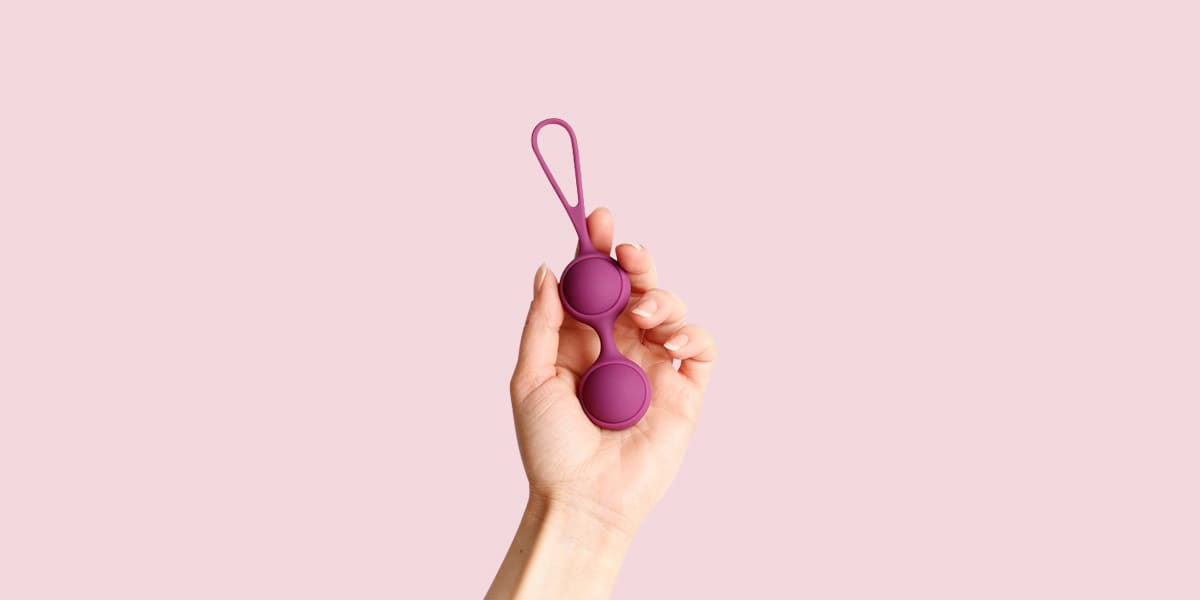Why you should start paying attention to your pelvic floor health

You’ve probably heard of Kegels (and feel guilty about not doing enough) — but do you know what they’re really for? While you may have heard that they “tighten your vagina,” that’s not exactly true. More accurately, Kegel exercises train and strengthen pelvic floor muscles. But most people don’t know where the pelvic floor is, or even what it is.
Basically, the pelvic floor is an internal set of muscles that supports the pelvic organs. For people with vaginas, that includes the uterus, vagina, bowel, and bladder. Pelvic floor health is important for both people with vaginas and people with penises, but is often overlooked when it comes to vaginal health. It’s crucial to make sure your pelvic floor is healthy because it plays such a huge role in sexual, reproductive, and bowel functioning.

Why does the pelvic floor matter?
Bladder control, core stability, sex, postnatal recovery — the pelvic floor connects and controls it all. With such big responsibilities, it’s no wonder that pelvic floor issues are not only extremely common, but also incredibly destructive. As you age, your pelvic floor muscles weaken, and this can be exacerbated by pregnancy, childbirth, menopause, chronic constipation, and even high-impact sports like running.
How do I know if my pelvic floor is healthy?
Pelvic floor dysfunction often presents as incontinence issues, i.e. occasional leaking when coughing, sneezing, or jumping. Whereas most muscles in the body attach bone on to bone, the pelvic floor is mostly connected to ligaments, meaning it can drop down due to hormone changes, such as those during pregnancy and menopause. This change can result in leakage. But leakage is not limited to pregnant or menopausal women; in fact, 1 in 3 women suffers some type of incontinence at one point in life. While incontinence is a common problem among women, it is not “normal,” because most cases can be prevented and treated (more on that later).
Other signs of pelvic floor dysfunction include lower back pain, difficulty in childbirth, uncomfortable or painful sex or exercise, and in extreme cases, organ prolapse. If your pelvic floor muscles become hypertonic (constantly contracted), it can lead to myofascial trigger points (knots), nerve sensitivity, or overall tightness, which makes any activity down there very painful.

So how do I take care of my pelvic floor?
Glad you asked — it’s all about proactive, preventative care. Regular pelvic floor exercises, like Kegels, strengthen your pelvic floor, therefore preventing and improving pelvic floor dysfunctions. Pro tip: Kegel balls. Toning your pelvic floor muscles also improves continence, core strength, stability, and posture, while reducing the risk of organ prolapse. When it comes to sex, learning to contract and engage these muscles correctly builds muscle strength, increases sensation, and boosts blood flow to the vagina, all of which helps to build stronger orgasms. After all, an orgasm is a series of muscle contractions — if your muscles are well trained, you can generate bigger contractions. Bigger contractions = bigger, better orgasms. And who doesn’t want that?
The first step to pelvic floor exercises is identifying where you pelvic floor muscles are. You can do this by attempting to stop urinating midstream. ONLY do this to locate your pelvic floor muscles, as continually messing with your urination can actually cause issues. Once you’ve identified your pelvic floor muscles, you can do the exercises in any position. The most basic Kegel exercise involves tightening your pelvic floor muscles as if you are lifting a small object, like a marble or blueberry. Try this for 3 seconds at a time, then relax for a count of three. Avoid holding your breath, and be mindful not to flex your ab, thigh, or butt muscles. Repeat this exercise 10-15 times, at least 3 times a day. If you already experience pelvic floor dysfunction, a pelvic floor physical therapist can recommend more specialized exercises.
